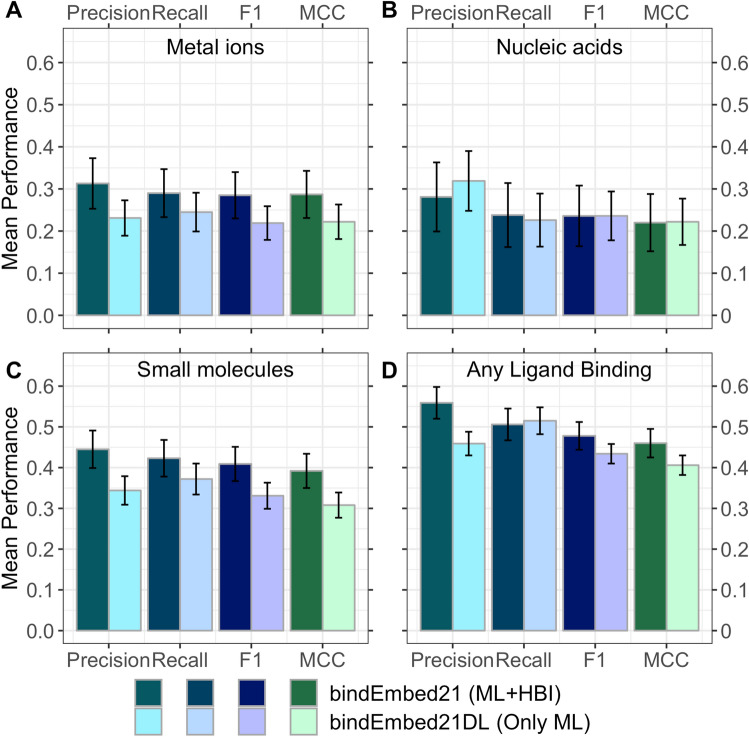Figure 6.
Best performance by combining ML and HBI. We combined homology-based inference (HBI) and Machine Learning (ML) by transferring annotations between homologs (E-value < 10–3) if available and running de novo ML predictions using bindEmbed21DL, otherwise. This combination improved performance for the prediction of whether a residue binds to a certain ligand class for (A) metal ions, (B) nucleic acids, (C) small molecules, and (D) the combined, unspecific prediction of binding any of those three ligand classes vs. non-binding any of the three. The final version of bindEmbed21 achieved F1 = 29 ± 6%, F1 = 24 ± 7%, and F1 = 41 ± % for metal ions, nucleic acids, and small molecules, respectively. Lighter colored bars indicate the performance for the ML method, darker colors indicate the performance for the combination of ML and HBI.

